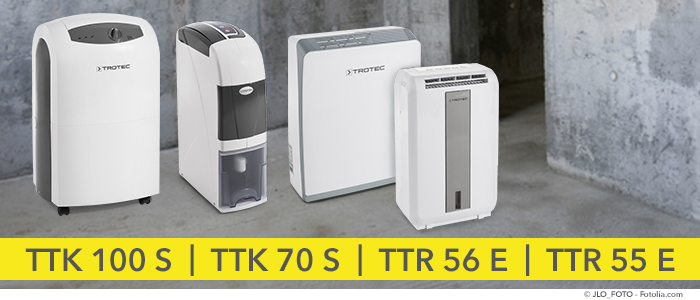Ventilation experts endlessly urge us to air basements on hot days. But when you do, the opposite of what you want actually happens – instead of ‘properly’ drying your musty basement, it instead becomes significantly damper. The walls literally start to sweat, and you can see the condensation form and run down the vertical surfaces. Let’s find out what’s going on…
A continuously damp basement is a serious problem. Humid yet warm environments of this kind provide the ideal breeding ground for health-threatening mould. To prevent its spread at home, experts recommend uniform, effective ventilation – even in summer. But how does this measure work so effectively in the home, but not in your basement – or is ventilation here simply the wrong approach?
The experts know why – the culprit is ‘summer condensation’
The simple cause of summer condensation is that warm air can contain more moisture than cold air. Summer weather is characterised by warm, humid air and high temperatures of around 25°C, plus a relatively high air humidity in the region of 60%. This summer air has a dew point temperature of approximately 16.7°C or higher. When the temperature drops below this level, water droplets form in the air – forming condensation. An effect which we are all familiar with: Everyday examples of warm air coming into contact with a cold surface include the mirror in your bathroom steaming up. Or lemonade bottles forming pearls of dew as soon as they are taken out of the refrigerator. This is all because the warm summer air cools down on the mirror and cold surfaces, thus releasing the moisture it had been carrying, in the form of water.
Particularly cool basements are therefore at risk on hot summer days. At depth, the soil has an almost constant temperature of approximately 12°C, meaning that the inner surfaces of your walls are more likely than not to be at temperatures that are below the dewpoint temperature. Warm, humid air from outside condenses on the cooler basement walls, and draws additional moisture into the basement space. Ventilation during the hot daytime hours thus inevitably leads to a build-up of condensation. Instead of pleasant fresh summer air in your basement, you instead get an uncomfortable damp room climate – the ideal breeding ground for the dreaded mould fungus.
So you also need to keep your basement dry in summer
- Never air these spaces on particularly hot summer days. Instead, it is better to air them only in the mornings when it’s not yet so warm, or you can use the cool of the evening.
- You can even air out the basement several times a day on cooler summer days, for around 10 to 15 minutes.
- If you wash your clothes in the basement, you should then always air out the space again, quickly and vigorously. If you also dry your washing in the basement, this exacerbates the moisture problem. In this case, you should use a dehumidifier, such as Trotec’s TTK 70 S, with a special dehumidification function for drying laundry.
- Do not place furniture or large cabinets directly against the outer walls of the basement. This will allow the air in the room to circulate more effectively.
- Also, never allow rarely used basement spaces to cool completely in winter – instead, ensure a temperate environment with gentle ventilation. If you want to gently heat your basement, Trotec recommends using a dehumidifier such as the TTK 100 S – which with its hot gas defrosting system performs up to 30% better in the temperature range of 5-15°C. If the basement rooms remain completely unheated in winter, then we recommend our TTR 55 E and TTR 56 E adsorption dehumidifiers.
Trotec is a leading provider of mobile dehumidification solutions
You are sure to find the dehumidifier you want in our extensive HomeComfort range. The easiest way – first of all, find out more about our recommended TTK 70 S, TTK 100 S, TTR 55 E and TTR 56 E dehumidifiers – now available in the Trotec Shop.


